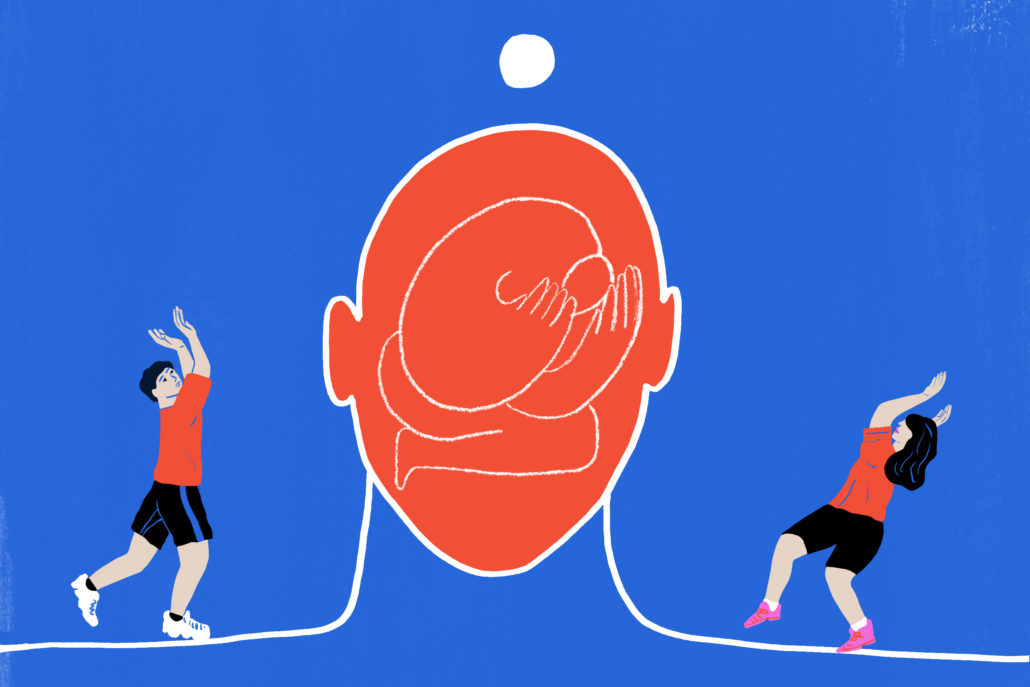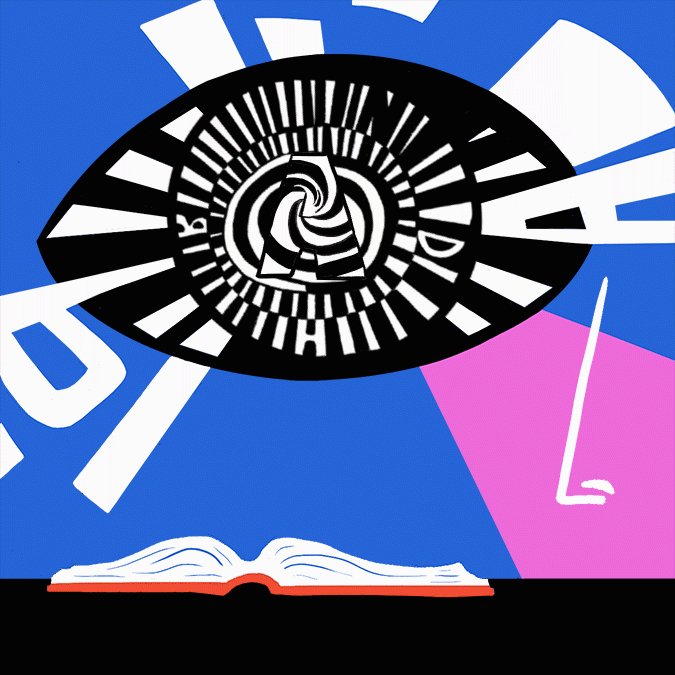
When physical or mental challenges aren’t obvious, people often judge, shame or dismiss. Here’s how to do better
In holiday photos, we’re a pretty typical-looking family: a happy mom with her sweet, freckled kids, grinning in front of the tree. You wouldn’t guess that I have muscle weakness that limits how fast and far I can walk. Or that one of my daughters has partial hearing loss. Or that my son has multiple diagnoses, including autism spectrum disorder, mental health challenges and learning disabilities.
What you see isn’t the whole picture
Invisible disabilities are not immediately noticeable. But they can be as life-altering as disabilities marked by distinctive physical features or behaviours, or by the use of assistive devices, such as wheelchairs, hearing aids or white canes.
In fact, the term invisible disabilities covers a whole spectrum of hidden conditions, including chronic pain, mental illness, communication disorders, brain injuries, developmental and learning disabilities, hearing loss, Crohn’s disease, sleep disorders, severe allergies and diabetes. These conditions can impact how a person relates to others, moves, processes and retains information, learns, uses the washroom and lives their daily life. They also impact how other people react to them. Too often, people’s responses are based on a whole bunch of incorrect assumptions, with number one being “But you don’t look like there’s anything wrong with you.”
Take my mobility challenges, which were the result of oncology surgery that partially damaged my spinal cord. When I was relearning how to walk, I always used a cane, and people were far more helpful to me because they saw my assistive mobility device. But once I was able to walk without the cane, people started making comments if I was walking slowly in public spaces and they felt I was in their way. A stranger once muttered, “If you lost weight, you’d go faster.” Of course, they didn’t know my weight gain was a direct result of my injury, and the fact that I could no longer ride a bike or swim, let alone walk any significant distance. But the comment stung nonetheless. I felt ashamed.
Invisible disabilities are more common than you think
There are no national statistics about exactly how many Canadians have invisible disabilities. But according to a 2012 Statistics Canada survey, 3.8 million Canadians aged 15 and older report that a disability limits their daily activities, and one in five of these people said they don’t use an assistive device. Also, in any given year, about 20 per cent of Canadians will experience mental illness, while one in 10 Canadians has a learning disability. All this means there are a lot of us out there, grappling with a world that’s been set up for the non-disabled—and the people around us often don’t get why we’re struggling.
Sadly, discrimination and prejudice are the norm
According to the Rick Hansen Foundation, it’s common for people with invisible disabilities to experience discrimination and exclusion. One of the hardest things for me, as a mother, is seeing people underestimate—or worse, scold or exclude—my kids for things they do differently as a result of the disabilities they were born with.

For example, my daughter only uses a hearing aid in school and prefers to lip-read the rest of the time. Sometimes she asks people to repeat things or takes more time to process what they’ve said. Those subtle differences have led many people to assume she’s cognitively delayed. Once that happens, they talk down to her and avoid asking her to try things that might stretch her in healthy ways, because they’re not aware of what she’s capable of doing.
On the other hand, my son, who actually does have cognitive delays, often hears “You speak funny” or “You’re weird” from other kids, who then give him a wide berth in the schoolyard or on the soccer field. Even many adults, once they figure out something is different about my son, assume he can’t do—or won’t understand—anything. They talk about him when he’s standing right there. Yes, he requires support, but there’s so much he can do—like run, read and help with chores. My youngest even learned archery on our last vacation.
The worst is when medical professionals pass judgment. After I adopted my son, he started accumulating diagnoses, including mental illness and fetal alcohol spectrum disorder (FASD). One psychiatrist took me aside and told me, “Walk away. Get another child and forget this one. He will ruin your family.” When people in the medical community hold misconceptions about a person’s value and don’t step up to support families, already-stretched-thin caregivers find themselves isolated and in endless battles to counter entrenched biases across entire systems.
There’s tremendous stigma around people whose life trajectory doesn’t look like what a large segment of society defines as normal; namely, finishing high school at 18, getting a university degree and having a career that brings in a middle-class income. That’s often the case for people with any disability, but when yours is invisible, judgment, hostility and sometimes even skepticism can also colour people’s attitudes.
Six ways to help
There are simple strategies people can use to assist or advocate for those who have invisible disabilities. Here are six to get you started.
1. Ask instead of assuming or judging. So how can you know if someone you encounter is not actually “lazy,” “slow,” “rude,” “weird” or “not paying attention” but, in fact, displaying symptoms of an invisible disability? The kindest thing people have done for me since I began struggling with mobility is to simply not make assumptions. They might say, “Can I get you a chair?” in the waiting room or offer up their seat on the bus, simply because they can sense I’m struggling to stand. If we see someone is having a hard time, we all should simply start by asking, “How can I help?”
2. Share accessibility information proactively. When I’m going to a conference, a meeting or another event, I really appreciate it when the organizers put accessibility information on their website. Then I don’t have to be that person who calls with all the questions. If you’re organizing an event, please just assume some people will need to know things like where to find accessible washrooms or whether there’s an FM loop system for people with hearing loss or a lunch option for specific dietary restrictions.
3. Don’t think of it as special treatment—because it’s not. Often people who don’t understand invisible disabilities think of accessibility requests as preferences. They’re not. They’re human rights. For example, if you’re planning to hold a support group meeting in a café with lots of background noise, you should be aware that anyone who can’t hear under those circumstances is automatically excluded from accessing the help you offer. If, instead of never showing up again, these people request a quieter venue, they’re not asking for special treatment—they’re asking for equity and the right to be included in life.

4. Don’t expect consistency. Another thing people need to understand is that no two days are the same for many of us with invisible disabilities: I occasionally still use my cane, based on factors like how level the ground will be, where I’m going and how long I’ll be walking. And yet when people see it reappear, after I’ve been managing without it, I always get comments questioning either the need for it or the authenticity of my disability. It’s not the role of the person without the disability to figure out what supports the person with the disability needs.
5. Make and advocate for employment accommodations. The impact of invisible disabilities is, unfortunately, far greater than having to deal with snide comments. It can mean living below the poverty line, facing job insecurity or underemployment, and relying on state care and services because a person’s ability to get out, get and keep a job, and create a support system is diminished.
To ensure people with disabilities are accommodated in the workplace, the Government of Canada has published a helpful guide for managers and organizations. These protections ensure that those of us with invisible disabilities get the chance to contribute to society and the economy by sharing our skills, insights and talents. If you have hiring responsibilities, familiarize yourself with them.
6. Never stop asking the important questions. Lastly, as you go about your day, keep asking yourself these three questions: Do my actions include or exclude? Do they make someone feel different? Am I passing judgment when I don’t really know the facts? People like my children and me don’t need you to feel sorry for us. But we do deserve the same chances as those without disabilities to live a full life and form friendships that connect us to our communities. We have so much to share.
What it means when you get it right
This year, I teared up when I got the call from my son’s school principal to say he would be receiving the Character Award at the end-of-year assembly. My son is the first child from the special-ed department ever to get that honour. The staff chose him because he’s so kind and attentive to other students: If he sees they’re being bullied, he will pat them on the back gently and share some words of encouragement to console them and heal their hurt feelings.
I’m proud of my son for not becoming bitter in the face of the slights and rejections he faces over and over in his daily life. I’m moved that, instead, he emulates the empathy and kindness of those people who recognize his value and practice patience and care rather than jumping to conclusions about what’s “wrong with him.” It means so much when people see beyond the invisible.